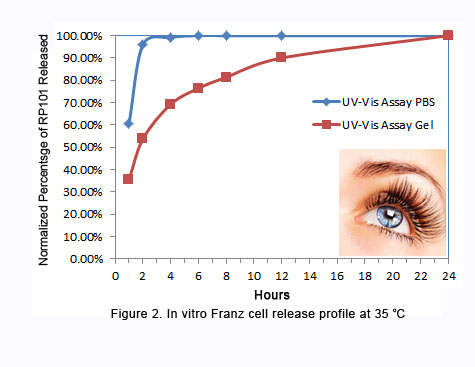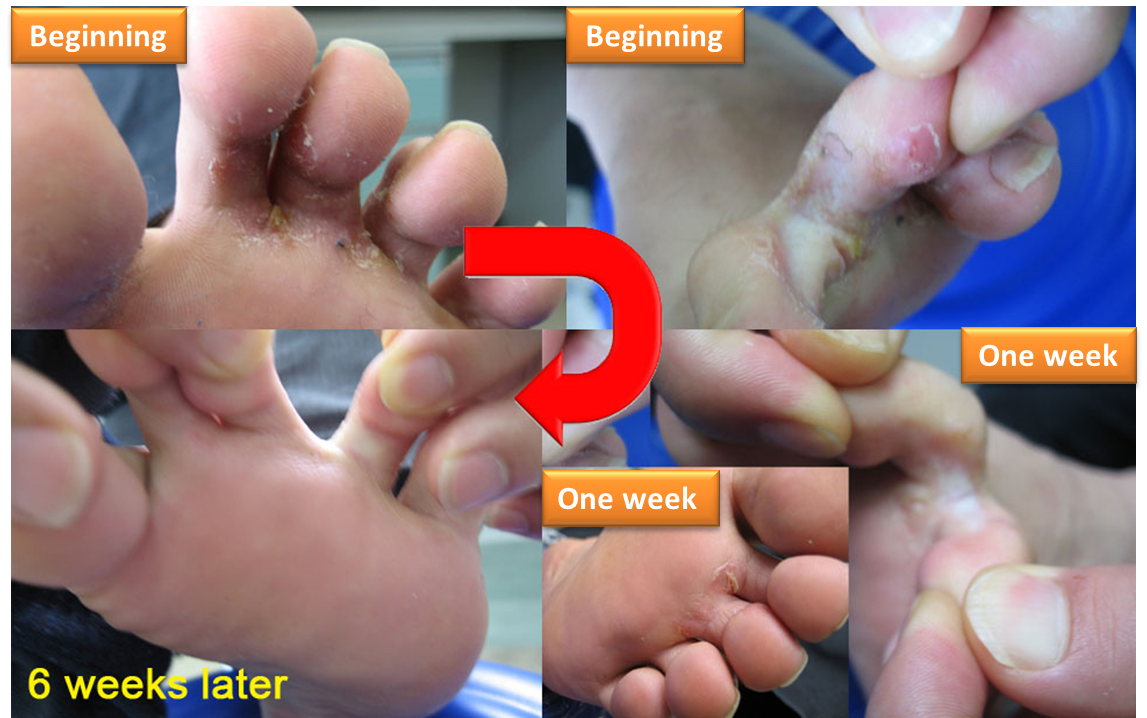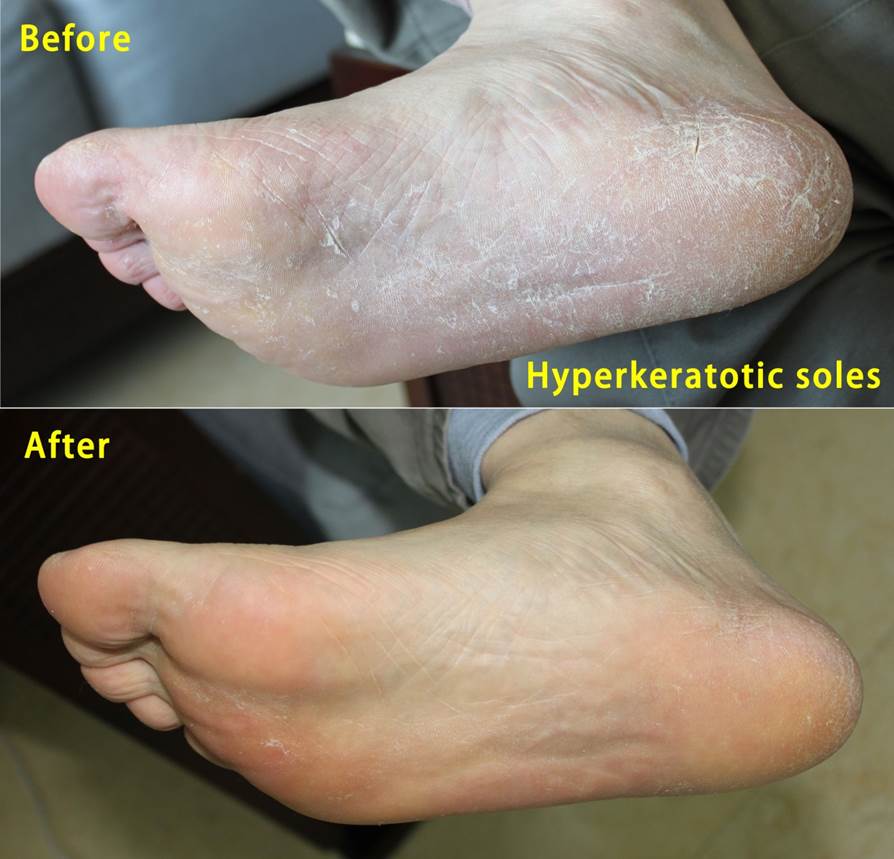Introduction
Drug delivery system is a method or process of administering an active pharmaceutical ingredient to achieve a therapeutic effect in humans or animals. It modifies drug release profile for the benefit of improving drug efficacy and safety, as well as patient convenience and compliance.
Current efforts in the area of drug delivery include the development of sustained release formulations in which the drug is released over a period of time in a controlled manner from a formulation, and targeted delivery in which the drug is only active in the target area of the body. The goal of all these sophisticated drug delivery systems is to deploy medications to the target through a stimuli-sensitive carrier that can control the therapy's administration by means of either a physiological or chemical trigger. During the past decades, polymeric materials provide the most important avenues for research and development of new drug delivery systems and have been shown to be effective in enhancing drug delivery, lowering systemic drug toxicity, improving bioavailability, and providing protection for pharmaceuticals against biochemical degradation.
Proprietary Smart Supramolecular Drug Delivery System
The importance of Supramolecular Chemistry was established by the 1987 Nobel Prize in Chemistry which was awarded to Donald J. Cram, Jean-Marie Lehn, and Charles J. Pedersen in recognition of their work in this area. The development of selective "host-guest" complexes in particular, in which a host molecule recognizes and selectively binds a certain guest, was cited as an important contribution. The study of non-covalent interactions is crucial to understanding many biological processes from cell structure to vision that rely on these forces for structure and function. Biological systems are often the inspiration for Supramolecular Chemistry research.
Supramolecular chemistry may be defined as “Chemistry beyond the molecule”. It has expanded the scope of synthetic chemistry and grown rapidly in the last few decades. Traditional synthetic chemistry deals with covalently bonded molecules, while Supramolecular Chemistry deals with organized entities of intermolecular complexes formed by intermolecular interactions. Such complexes consist of association of two or more molecules held together by non-covalent intermolecular bonds, such as: hydrogen bonds, dipole-dipole interactions, van der Waals forces, cation-pi interactions, pi-pi bonds, CH/pi interactions, or hydrophobic effects, and etc.
The development of supramolecular complexes requires the approach of using multidisciplinary science combined with the specific manipulation of selective non-covalent intermolecular interactions. It provides an approach to the formation of Nano scale systems and allows design and development of smart, functional materials with applications ranging from biology to materials science. The most important benefits of such complexes are their reversibility and the fact that one or more properties can be changed in a controlled manner by external stimuli, such as temperature, pH, moisture, stress and etc.
The proprietary smart supramolecular drug delivery system developed at Broda Tech is comprised of a water-soluble block copolymer and at least one water insoluble associative gelling adjuvant. The associative gelling adjuvants are water insoluble and are not capable of viscosifying or gelling water when they are present in water by themselves! Due to their unique complex structure formed by hydrophilic and hydrophobic chain segments, such materials can help dissolve water insoluble or sparely soluble active pharmaceutical ingredients or other active ingredients without need of solvents. Such materials also have an excellent safety profile for applications in pharmaceutical, cosmetics and personal care products.
Active pharmaceutical ingredients or other active ingredients formulated with such supramolecular drug delivery system will be able to dissolve in water to form either an aqueous solution, a hydrogel or a smart hydrogel which will exhibits a solution to gel (sol-gel) transition and transforms a low viscosity solution to a higher viscosity gel as temperature increases from room temperature to physiologically acceptable temperature ranges, such as human skin temperature at 32 °C or eye temperature at 35 °C.
 For example, a smart hydrogel delivery system can be prepared by dissolving such complexes in water with relatively low solid content. Figure 1 shows before and after pictures of a liquid to gel transition of an experimental smart hydrogel system. The hydrogel experiences a transition from a fluid liquid at 22 °C (a) to a solid gel form at 26 °C (b). The experimental solution prepared has an inherent sol-gel transition temperature at about 24 °C.
For example, a smart hydrogel delivery system can be prepared by dissolving such complexes in water with relatively low solid content. Figure 1 shows before and after pictures of a liquid to gel transition of an experimental smart hydrogel system. The hydrogel experiences a transition from a fluid liquid at 22 °C (a) to a solid gel form at 26 °C (b). The experimental solution prepared has an inherent sol-gel transition temperature at about 24 °C.
Such hydrogel system can be utilized as a thermo-responsive delivery system for pharmaceutical, cosmetics and personal care products. The formulated products will stay in a liquid state at room temperature and subsequently transform to a shear sensitive hydrogel at designed sol-gel temperature. for example, upon contact with skin, mucosa or eyes. This "magic" transition in product forms is very attractive which may offer prolonged residence time and controlled or sustained release of active ingredients for pharmaceutical applications.
IntelliGel is a smart supramolecular hydrogel drug delivery system with ability to dissolve water insoluble and sparely soluble drugs, or disperse, suspend and stabilize otherwise insoluble drugs with excellent bioavailability or penetration performance for sustained release; it has a unique adjustable solution to gel (sol-gel) transition temperature in the range of 4-45 °C; IntelliGel is an odor-free, clear and transparent hydrogel with low solid content, and forms invisible patch with virtually no residual feel on skin. clinical studies indicate it is non-irritating, and non-allergic. It also has a wide pH tolerance and excellent compatibility with a variety of drug substances.
Development of a New Ophthalmic Therapy for Chronic Dry Eye Syndrome

The reverse thermo-responsive behavious of the delivery system may offer advantages of easy application, prolonged residence time and sustained release while increasing bioavailability of active pharmaceutical ingredients. This may lower dosages, dosing-frequency and, thereby, reducing potential systemic toxicities of active pharmaceutical ingredients.
Figure 2 shows an in vitro Franz cell release profile for a new chronic Dry Eye therapeutic currently under development by Redwood Pharma , AB of Sweden under an exclusive worldwide license agreement from Broda Tech. In the comparative study, the rates of diffusion of an active pharmaceutical ingredient formulated in IntelliGel and PBS solutions were investigated. The results indicate that IntelliGel has sustained release profile of active pharmaceutical ingredient over 12 hour period of time after transforming from a fluent liquid to a gel state at 35 °C. IntelliGel drug delivery system offers opportunity for the development of new therapies based on existing or new active pharmaceutical ingredients with prolonged residence time and sustained release.
Development of Anti-fungal IntelliGel
Terbinafine hydrochloridean is an allylamine anti-fungal agent originally developed by Novartis. As a 1% cream is sold as Lamisil® Cream by Novartis, it is used for superficial skin infections such as jock itch (Tinea cruris), athlete's foot (Tinea pedis) and other types of ringworm (Tinea corporis). Studies have shown that terbinafine hydrochloride cream works in about half the time required by other antifungal drugs.
Terbinafine hydrochloride is a white fine crystalline powder and is highly lipophilic in nature, and tends to accumulate in skin, nails, and fatty tissues. Like other allylamines, terbinafine inhibits ergosterol synthesis by inhibiting squalene epoxidase, an enzyme that is part of the fungal cell membrane synthesis pathway. Because terbinafine prevents conversion of squalene to lanosterol, ergosterol cannot be synthesized. This is thought to change cell membrane permeability, causing fungal cell lysis. The product Lamisil® Cream is recommended to treat Tinea Pedis which is applied to the bottom or sides of the foot on affected skin area twice a day (morning and night) for 2 weeks. The Lamisil® Cream is an oil based emulsion that contains 1% terbinafine hydrochloride.
Broda Tech has re-formulated the active ingredient Terbinafine Hydrochloride into a water-based IntelliGel drug delivery system without the use of alcohol or other solvents. The IntelliGel drug delivery system provides a clear and transparent hydrogel with a unique light texture, easy to apply and gives a soft and smooth feel to the skin to all day treatment. After application, it forms a long lasting invisible patch on the affected areas. The highly lipophilic terbinafine hydrochloride is uniformity present at the molecular level in the hydrogel formulation thus enhancing the product's efficacy and safety.
Based on a US investigator lead clinical study entitled: "An Open Label Pilot Study to Assess the Therapeutic Equivalency of the Safety and Effectiveness of IntelliGel versus Lamisil Cream (terbinafine hydrochloride) in Subjects Diagnosed with Tinea Pedis", the clinical study results demonstrated that the anti-fungal IntelliGel once daily for two weeks is therapeutically superior or equal to Lamisil cream twice daily for two weeks for the treatment of Tinea Pedis. In the study, twelve patients diagnosed with Tinea Pedis were randomized to receive either topical treatment with Lamisil Cream or anti-fungal IntelliGel. Clinical symptoms or signs as well as mycological examinations were evaluated and performed at baseline, after week one and/or two weeks of treatment. A follow-up observation visit at end of week six was also recorded.
The following pictures showes patients' results of before and after Anti-fungal IntelliGel treatments:


OTC Acne Treatment, Skin Care and Chemical Peel Products
Click
here for the introduction presentation of SupraSalix technology.
Salicylic Acid is a naturally occurring active ingredient. It is also known as beta hydroxy acid or BHA. It has both cosmetic and medicinal benefits. The use of salicylic acid for the treatment of acne, skin wrinkling, skin pigmentation, warts, freckles, dandruff or other skin-related problems is well known in the preparation of cosmetic and dermatological formulations. It works as an exfoliator to penetrate into pores, dissolve dead skin cells and enhance skin cell turnover. This cell renewal is accompanied by an overall improvement in the appearance of the skin texture with smoothing effect in a reduction of fine lines and wrinkles.
Salicylic acid is a weak acid in a colorless crystalline form and is poorly soluble in water (2 g/L at 20 °C). It is soluble in ethanol, propanol, acetone, ethers and other organic solvents that are usually unsafe for use on human skin.
Salicylic acid tends to form crystals on standing and precipitate out within various un-buffered solutions. The recrystallization of salicylic acid not only significantly reduces the bioavailability of active ingredient but also may cause skin irritation. It is a common practice to increase the pH of formulations which results in neutralizing part of free acid to increases solubility and reduces recrystallization, and avoids possible skin irritation at low pHs. Although it helps formulation chemists achieve stable products and avoids possible skin irritation; it reduces the efficacy of the salicylic acid and results in a product that is therapeutically less effective.
It is well known that changes in pH have a profound influence on many aspects of the action of therapeutically active ingredients. The proportion of the unionized and ionized components is dependent on the pH of the medium according to the well-known Henderson-Hasselbalch equation (1):

Here, [HA] is the molar concentration of the unionized weak acid, [A⁻] is the molar concentration of ionized base and Ka is the acid dissociation constant.
Salicylic acid has a pKa of 3. Table 1 lists calculated molar percentage of unionized salicylic acid as a function of pH values based on Henderson-Hasselbalch equation (1). The calculation indicates that it has 50% un-ionized salicylic acid at pH 3.0, 23.8% unionized salicylic acid at pH 3.5 and 9.1% unionized salicylic acid at pH 4.0. It is well known that the efficacy of the product containing salicylic acid depends mainly on the availability of free salicylic acid, which is limited with buffers and high pHs.

A number of strategies have been developed for the delivery of salicylic acid in the past. These include encapsulation of salicylic acid particles and the esterification of salicylic acid with polymeric polyols for controlled release. However, these approaches provide only partial solutions for the delivery of salicylic acid with limitations in formulation freedom and reduced therapeutically efficacy.
To overcome technical challenges, SupraSalix, a water soluble supramolecular salicylic acid, has been developed by advanced intermolecular recognition and self-assembly technology. This approach utilizes non-covalent, reversible, intermolecular bonding to form water soluble supramolecular salicylic acid complexes. The release of salicylic acid can be achieved through the dissociation of intermolecular bonded water soluble complexes in water. Aqueous solutions or hydrogels containing salicylic acid intermolecular complexes are stable over a wide temperature range without recrystallization or discoloration.
SupraSalix provides water soluble salicylic acid at low or controlled pHs to help achieve maximum efficacy with virtually no skin irritation. Clinical study of Human Repeat Insult Patch Test (RIPT) for skin irritation and skin sensitization on 50 subjects indicates that there are no identifiable signs or symptoms of primary irritation or sensitization noted for the formulation containing 2% effective salicylic acid at pH 2.5-2.8. This makes SupraSalix™ an effective for the delivery water soluble salicylic acid at low pHs.
SupraSalix shows high efficacy in reducing blemishes, soothing inflammation, improving skin appearance and accelerating skin's clarifying process without skin irritation comparing with other OTC acne products on the market. Studies on an OTC acne treatment product, containing 2% effective salicylic acid, demonstrate superior overall performance than existing products.
SupraSalix can meet one of the most demanding formulation challenges typically associated with the use of salicylic acid at low pHs without solvents. It can be formulated into various existing products, or newly developed formulations, by simply dissolving SupraSalix™ in water without the need for any additional solvents, such as ethyl alcohol, followed by incorporating into various systems either in unbuffered or buffered formulations. However, caution must be exercised when formulating at low pH to avoid ingredients that are susceptible to hydrolytic degradation in acidic conditions.
Test marketed OTC Broda® Skincare Acne System with 2% salicylic acid. It is a solvent-free hydrogel with pH in the range of 2.6-2.8. The products have passed ICH 6 months stability and a real shelf life over 4 years for industrial produced commercial products.
Perhaps the only delivery system that can form a hydrogel at pH below 3.
Advantages of Proprietary and Patented Smart Supramolecular Drug Deleivey System
Broda Tech's proprietary and patented smart supramolecular drug delivery system is a platform delivery technology and is suitable for various different drug delivery requirements and forms, such as solid dosage, hydrogel or smart hydrogel, liquid and spray forms. In summary, the delivery technology:
• Be able to dissolve water-insoluble or sparely soluble drugs;
• Forms either solution or smart hydrogel without solvents;
• Alcohol-free and low solid content;
• Clear & transparent, odor-free;
• Forms invisible patch, no peeling, or flaking;
• Excellent skin substantivity;
• Stable in a wide pH range (1-12);
• Light texture, and spreads uniformly;
• Excellent safety profile;
• Fast formulation deployment & regulatory compliance.
Smart supramolecular drug delivery system has a variety of broad potential applications in new pharmaceutical preparations, upgrading or renovation of existing drugs, for example:
- • Anti-inflammatory and analgesic medicines
- • Hormone drugs
- • Cardiovascular medicine
- • Wound Dressing
- • Protein and peptide
- • Tissue engineering
- • and etc.
Talk with us about your formulating challenge or your desired applications. We will work with you to explore a product solution that meets your needs.

 For example, a smart hydrogel delivery system can be prepared by dissolving such complexes in water with relatively low solid content. Figure 1 shows before and after pictures of a liquid to gel transition of an experimental smart hydrogel system. The hydrogel experiences a transition from a fluid liquid at 22 °C (a) to a solid gel form at 26 °C (b). The experimental solution prepared has an inherent sol-gel transition temperature at about 24 °C.
For example, a smart hydrogel delivery system can be prepared by dissolving such complexes in water with relatively low solid content. Figure 1 shows before and after pictures of a liquid to gel transition of an experimental smart hydrogel system. The hydrogel experiences a transition from a fluid liquid at 22 °C (a) to a solid gel form at 26 °C (b). The experimental solution prepared has an inherent sol-gel transition temperature at about 24 °C.





